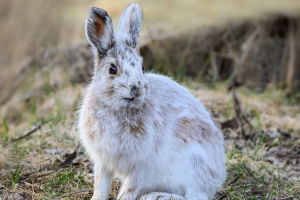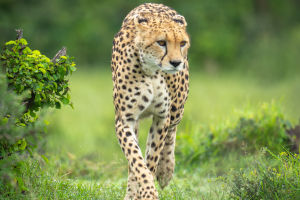Bee Language Secrets
Have you ever wondered how tiny bees manage to work together so perfectly? Despite their small size, bees have an incredibly complex communication system that helps them build hives, find food, and protect their colonies.
In fact, researchers have spent decades decoding the fascinating "language" bees use—a mix of dance, scent, and sound. Let's take a deep dive into the buzzing world of bee communication and uncover the secrets behind their coordination.
The Need for Communication in the Hive
Bees live in colonies that can consist of tens of thousands of individuals. In such a densely populated environment, coordination is vital. Worker bees must know where to collect nectar and pollen, how to regulate the hive's temperature, and when to defend against intruders. Since they can't speak or use facial expressions, bees rely on a system of body movements, chemical signals, and subtle vibrations to exchange information.
This non-verbal system is not just instinctive—it's highly efficient and developed over millions of years. Every signal has a purpose, and every bee knows how to read it.
The Famous Waggle Dance
One of the most fascinating discoveries in animal behavior is the bee's "waggle dance." First observed and studied by Nobel Prize-winning scientist, the waggle dance is how honeybees inform one another about the location of food sources.
When a worker bee finds nectar or pollen, she returns to the hive and performs a figure-eight dance. The direction of the "waggle" part of the dance relative to the vertical comb indicates the direction of the food relative to the sun. The duration of the waggle part tells the distance to the food source. For example, a longer waggle means the food is farther away.
This method allows bees to share detailed GPS-style information without ever leaving the hive.
Round Dance for Nearby Food
Not all food is far away. When nectar or pollen is located within about 50–100 meters of the hive, bees use a simpler version of communication called the round dance. In this dance, the bee moves in a circular pattern without a waggle. This tells other bees that food is close by, though it does not provide a specific direction. It encourages them to go out and search in the surrounding area.
Scents Speak Volumes
In addition to dancing, bees use pheromones—chemical scents—to communicate many messages. These scents can signal danger, identify the queen, mark food sources, or call for help.
For example, the queen bee releases a unique scent that lets all other bees know she is alive and well. If this scent fades or disappears, workers may start rearing a new queen. Similarly, forager bees leave scent trails that help guide others to nectar-rich flowers.
Alarm pheromones are also powerful. If a bee stings, it releases a chemical that alerts nearby bees to the threat, sometimes triggering defensive behavior. This is one reason why bee stings can sometimes lead to a chain reaction in a colony.
Vibrations and Tactile Signals
Bees also communicate through vibrations. Inside the hive, some worker bees produce rhythmic vibrations by shaking their bodies or tapping others. This is particularly important when encouraging inactive bees to begin foraging or perform other tasks.
Another example is "piping" by the queen or rival queens during a succession period. These high-pitched sounds serve as a form of signaling power, competition, or readiness.
Bees can also use their antennae to touch and "taste" each other, gathering chemical and vibrational clues to better understand their fellow hive mates' roles or experiences.
Bee Communication in Pollination
Communication also plays a role outside the hive. When foraging, bees vibrate flowers—a process called "buzz pollination"—to release more pollen. In some species like bumblebees, the frequency of vibration can even be adjusted depending on the flower.
By sharing successful foraging strategies through dance and scent, bees ensure that the colony makes the most of every blooming season. This collaboration not only helps the hive but also benefits ecosystems and agriculture around the world.
Bee Brains and Learning Ability
Though small, bee brains are surprisingly advanced. Research has shown that bees can learn and remember complex tasks, such as associating colors with rewards or navigating mazes. This learning supports their communication systems, allowing them to adapt signals based on new experiences.
A study by Dr. Lars Chittka, found that bees can even learn from observing each other—a form of social learning once thought to be limited to larger animals. Their ability to modify dances or explore new patterns demonstrates flexibility in their "language."
What We Can Learn from Bees
The study of bee communication has applications far beyond biology. Scientists and engineers have used bee coordination to design smarter robotics, traffic flow systems, and even computer algorithms. The concept of a group working together through small, simple signals—called "swarm intelligence"—is directly inspired by bees.
Understanding how bees solve problems collectively also teaches us about teamwork, leadership, and the power of decentralized decision-making.
Protecting the Messengers
As pollinators, bees are crucial to human food production. Yet bee populations worldwide are declining due to habitat loss, pesticide use, and climate change. By learning more about how bees communicate and work together, we can better protect their habitats and ensure their survival.
Supporting pollinator-friendly gardens, reducing chemical use, and advocating for science-based conservation policies are ways we can help preserve the amazing world of bee communication.
Conclusion: Listen to the Buzz
From waggle dances to chemical signals, bees have developed one of nature's most efficient communication systems. Their messages may be silent to us, but they are rich in meaning, purpose, and complexity. Next time you see a bee buzzing around a flower, think about the story it might be carrying back to its hive—and the incredible teamwork behind every drop of honey.
What do you find most fascinating about how bees interact? Share your thoughts or experiences—we'd love to hear what has "buzzed" your curiosity!
-
 Hibernation UncoveredDiscover the wonders of animal hibernation—how winter sleep works and why it's vital for survival!
Hibernation UncoveredDiscover the wonders of animal hibernation—how winter sleep works and why it's vital for survival! -
 Color ShiftersHow Animals Change Their Colors to Survive in Different Environments and Outsmart Predators!
Color ShiftersHow Animals Change Their Colors to Survive in Different Environments and Outsmart Predators! -
 Speed SecretsWhat Makes Cheetahs the Fastest Land Animals? Discover Their Unique Body Features and Hunting Strategies!
Speed SecretsWhat Makes Cheetahs the Fastest Land Animals? Discover Their Unique Body Features and Hunting Strategies!
Contact to : xyjph123@gmail.com
Privacy Agreement
Copyright © boyuanhulian 2020 - 2022. All Right Reserved.
Privacy Agreement
Copyright © boyuanhulian 2020 - 2022. All Right Reserved.